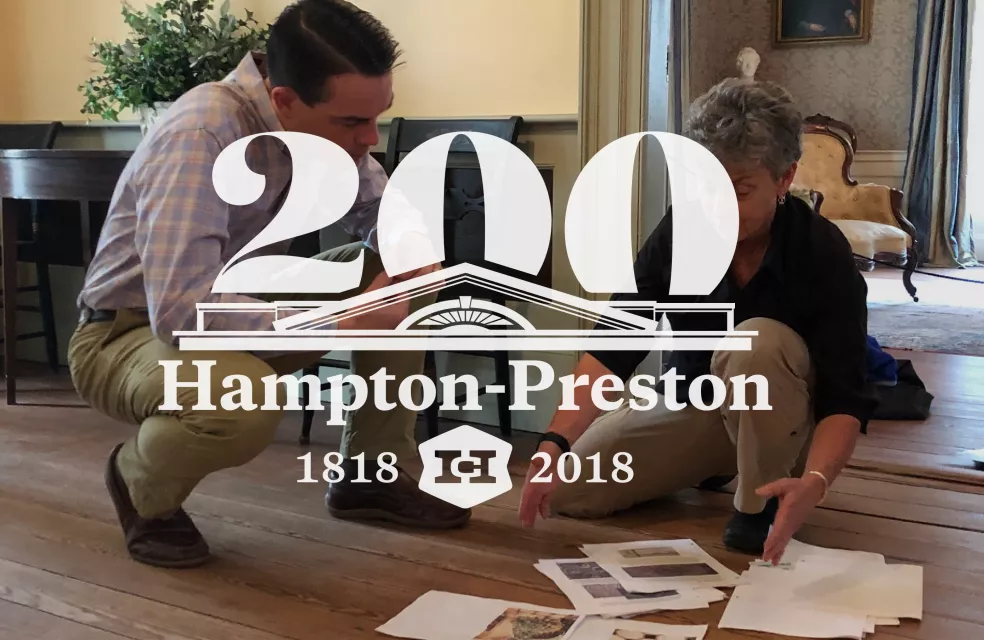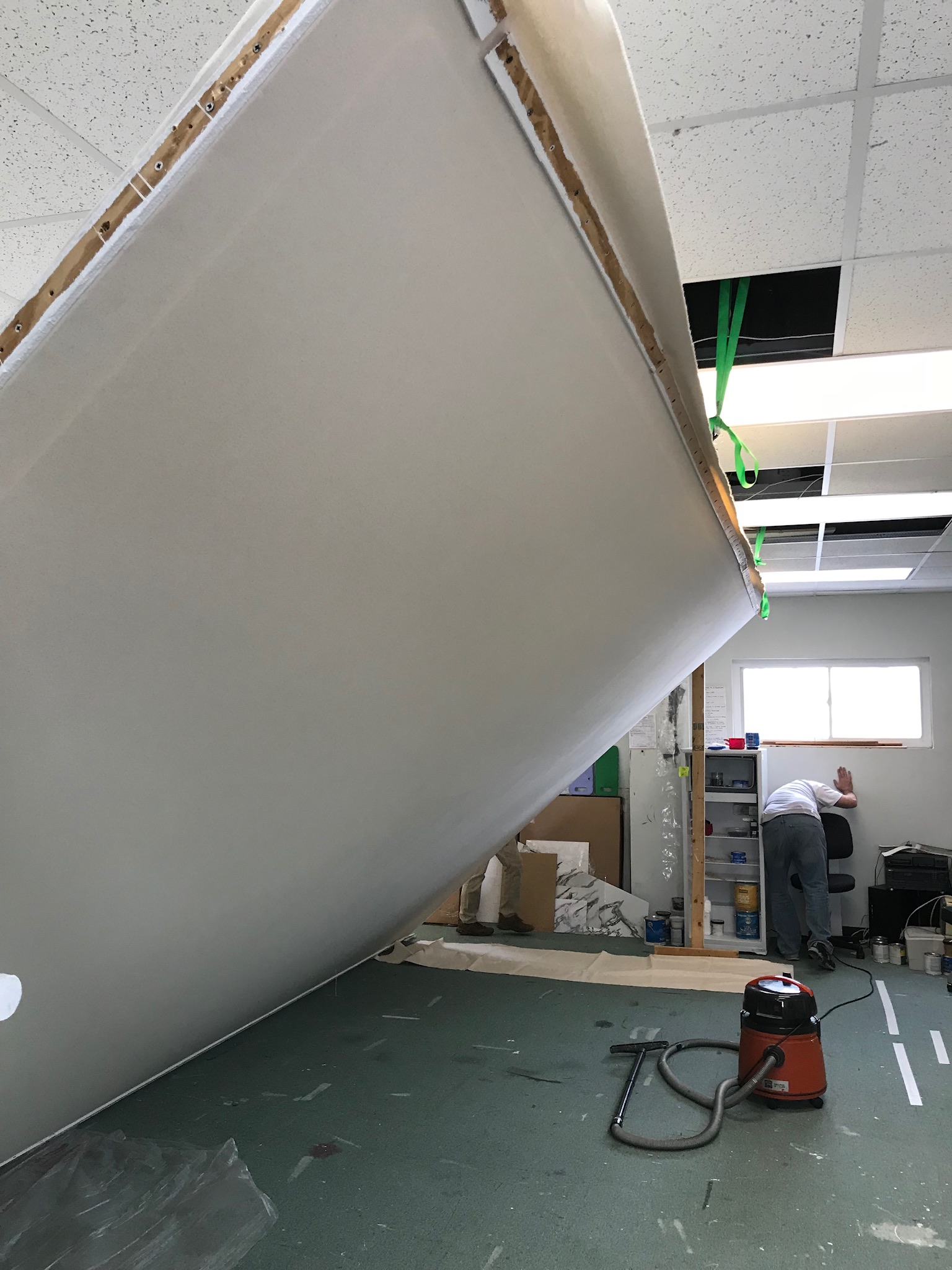HP's Newest Installation
Monday, March 26th 2018

Good things come to those who wait. That’s a great saying, if in the end you do indeed get what you waited for. The forthcoming installation of an historically correct floor covering in the entry hall of the Hampton-Preston Mansion is eighteen years in the making for HC’s Director of Cultural Resources John Sherrer. John’s patience is paying off because the floorcloth he has envisioned for the mansion’s entry hall for all that time is being fabricated by Black Dog Gallery of Virginia and will soon be installed as part of the 200th anniversary rehabilitation and reinterpretation.
Floorcloths, just as the name implies, are painted canvas floor coverings that were popular in American from the 18th-century until the early 20th-century. In keeping with the room-by-room evolution of the mansion, the reproduction floorcloth will considerably improve the recreation of the entry hall’s 1818 appearance. Siblings Virginia (Ginny) Lascara and Joe Lascara founded the Gallery in 1992. Since then they’ve created historically accurate projects for such notable places as Montpelier and Monticello. Joe took a few minutes to explain the multi-step process to create a custom floorcloth:

"First, using 2” by 4” lumber, we build a stretcher frame 2-3 inches larger in both dimensions than the required size of the floorcloth. The corners of the frame are mitred and cross-braced to maintain square dimensions. The fabric is attached in the same way an artist stretches a canvas, starting in the middle on each side and working to the ends. We fasten the canvas to the stretcher boards with wooden strips and screws. The goal is to achieve a flat canvas surface with even tension around the entire perimeter. Next comes the priming and painting of the canvas. We use exterior latex primer and paints, 4 coats on each side. We sand the “show” side of the canvas with 220 grit sandpaper and vacuum the surface. We then apply 1-2 coats of the selected base color. Once dry, the canvas is removed and using a square, straight edge, and tape measure, we layout the perimeter and draw the design on the cloth. The design is painted using exterior latex paints and glazes then sealed with 3 coats of clear acrylic."
In recognition of his patience, we deferred to John’s choice of pattern and color of the floorcloth while we were planning the project with the Lascaras. We arrived at traditional design the simulates the look of marble tiles with a border offset a couple of inches from walls and other architectural details of the room. John is a great record keeper, so while it didn’t surprise me he still had an 18-year-old copy of the original letter he sent to Ginny, it certainly reminded me of the necessity of taking the long view in the preservation and interpretation of an historic house museum. And yes, he’ll be the first person to walk across the new floorcloth.
For more information on Black Dog Gallery, visit blackdoggallery.net
Photos courtesy Black Dog Gallery
Learn more about the 200th anniversary of the Hampton-Preston Mansion.